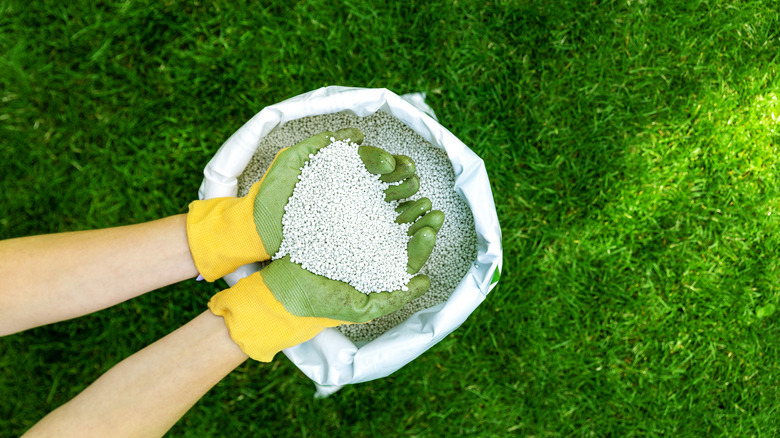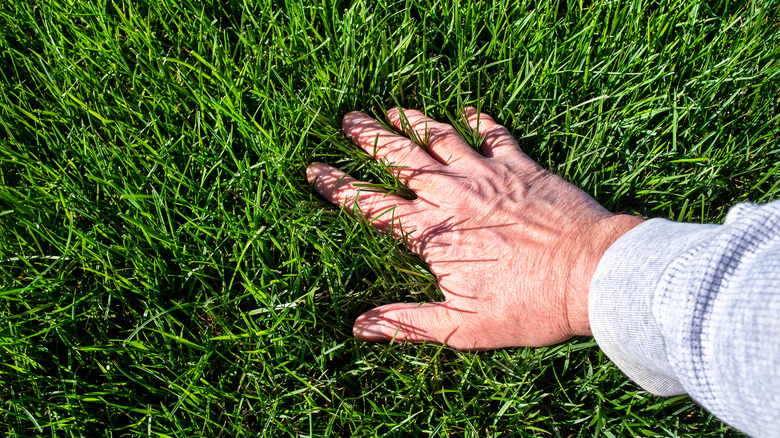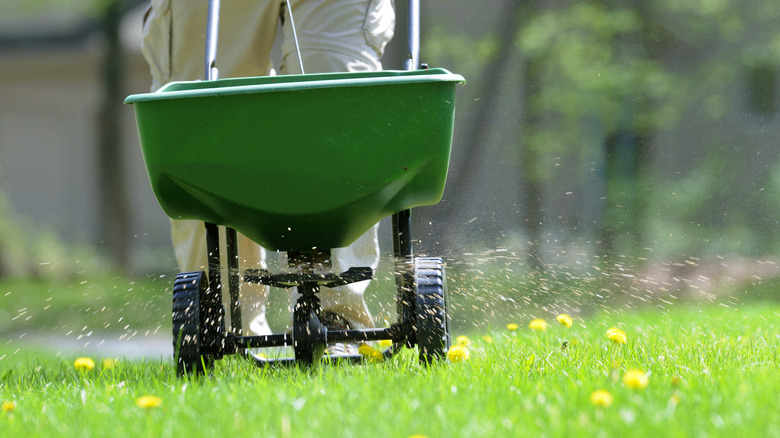Here Are Our Top Tips For Fertilizing Your Lawn In The Summer
Many people have scraggly and weak looking lawns they aren't proud of. An unhealthy lawn is unlikely to impress your neighbors, but more importantly, won't be ideal for spending time in the yard with kids and family members. It can be disappointing to come home everyday and be welcomed by an unhealthy lawn that's full of brown spots rather than one that has a lush, green hue.
If you want to grow a stunning lawn that you're proud of, fertilize it at the appropriate times and with the right fertilizer. There are consequences to fertilizing your lawn too early in the season. Warm-season grasses should be fertilized in the late spring, early summer, or both for best results. Grass should be fertilized when it's experiencing growth. To get the most out of using fertilizer, make sure to use it correctly. Fertilizer misuse can damage your lawn, harming its appearance and its health. Getting the timing right is one step toward luscious grass, but there are other things to remember as well.
Choosing the right fertilizer for your summer grass
To have the best time improving your lawn with fertilizer, carefully choose between your options. There are different types of grass seed and not all fertilizers will be suitable for the type of grass you have. Warm season grasses need a different fertilizer than cold season grasses to prevent damage. In summer, it's best to opt for a fertilizer that's low in nitrogen. This is because those with a lot of nitrogen can damage the lawn during the summer and could cause burning. Low nitrogen fertilizers are ideal and will help your summer grass grow strong without adding too many nutrients to the soil.
It's also a good idea to choose a slow-release fertilizer during the summer as well, since this type will be less likely to cause burning. Slow-release fertilizer is made to break down slowly over time as it's affected by water, sunlight, and soil. It could last as long as three months. With this type of fertilizer, nutrients won't be released to the soil too quickly.
Spreading your lawn fertilizer
Once you have the right type of fertilizer, use a lawn spreader to spread it across your yard. You'll want to review your fertilizer's instructions carefully and use the right settings on your lawn spreader so that it will distribute the right amount of fertilizer. To prevent damage, remember that you shouldn't over-fertilize your lawn during the process.
Keep close track of your lawn while you're spreading fertilizer and don't add more or less than necessary to a particular spot. Adding header strips can help you stay on track when spreading fertilizer. After you're done, you'll want to clean up. Sweep away any fertilizer that's on your driveway and sidewalks with a broom and a dustpan and then rinse the lawn spreader thoroughly. Finally, after 24 hours have passed, water the lawn with a sprinkler to complete the job and ensure the fertilizer mixes with the grass and soil.


